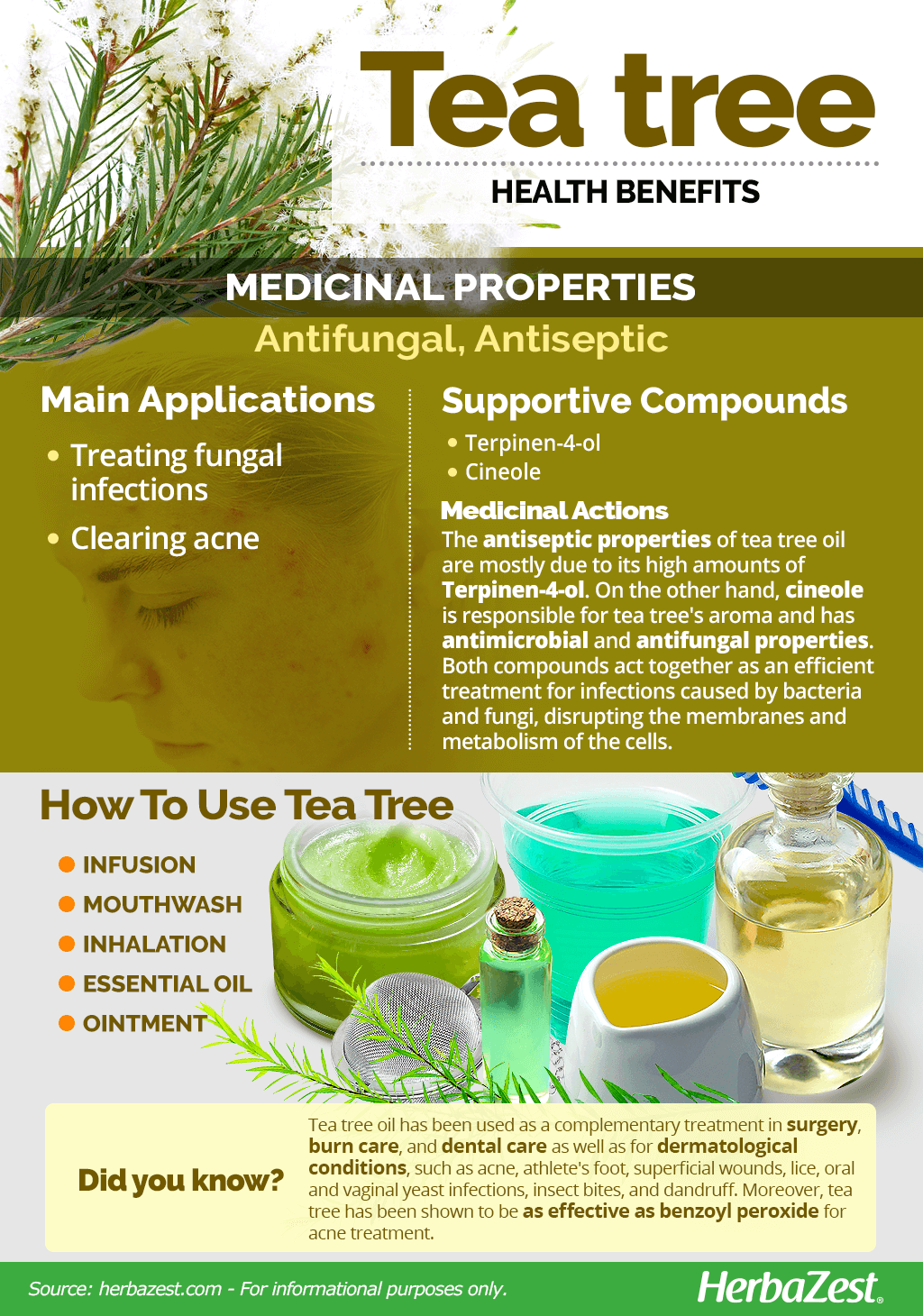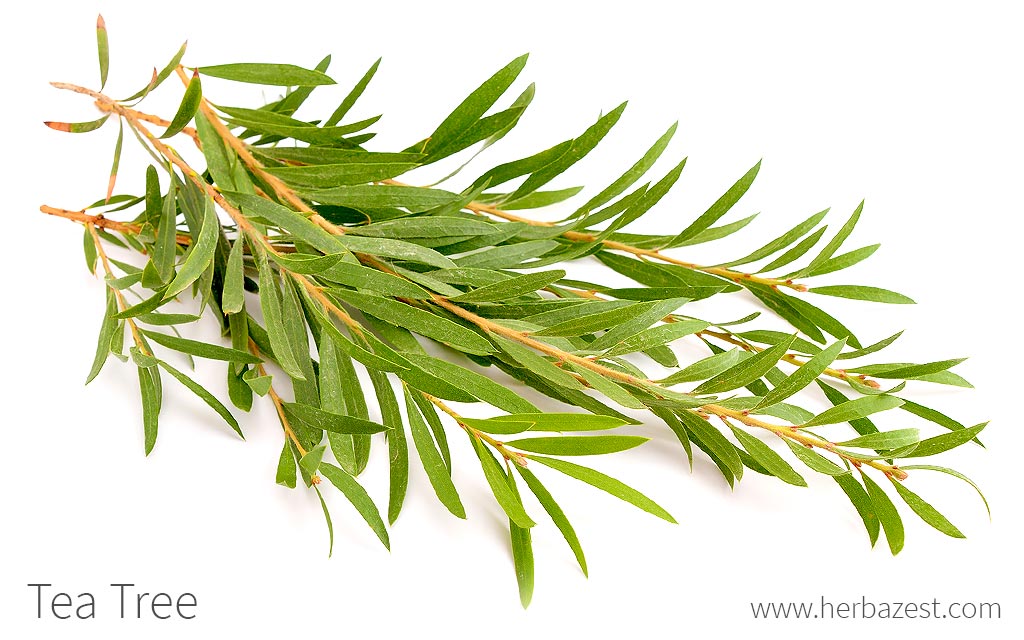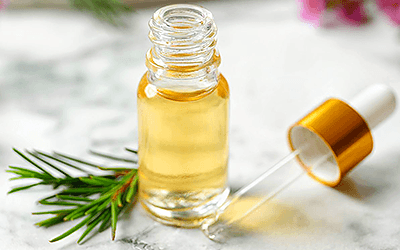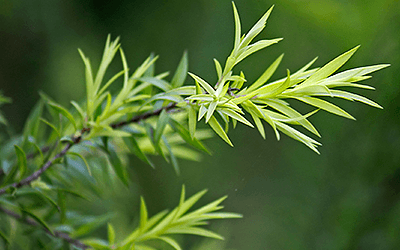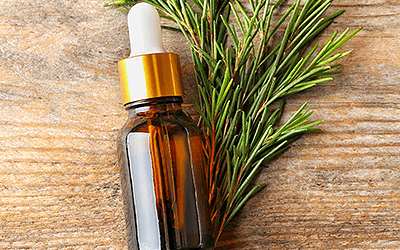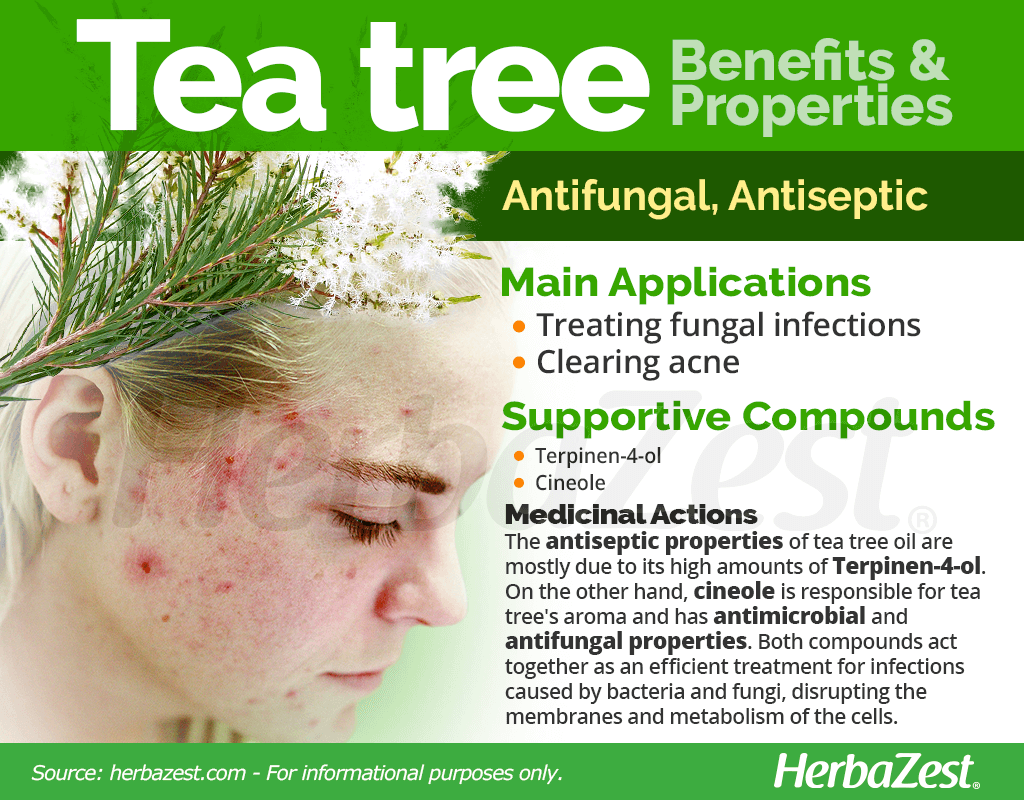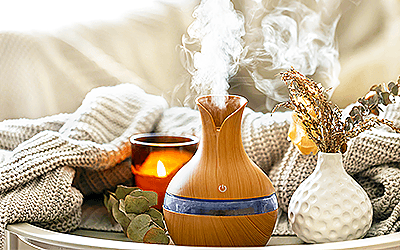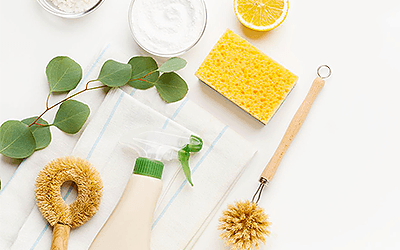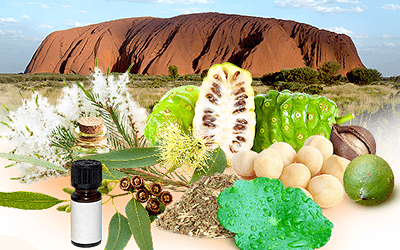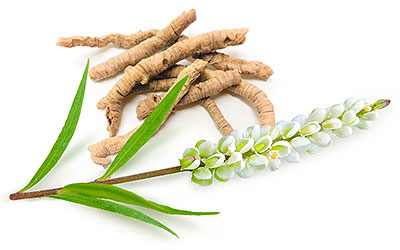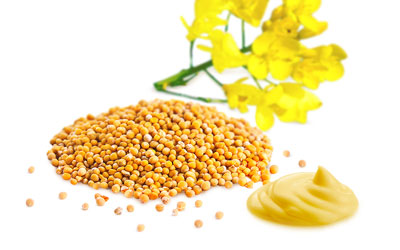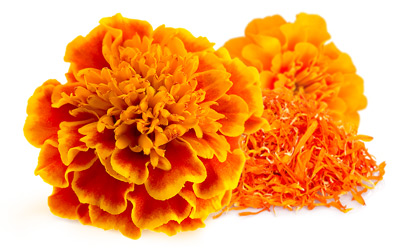The aboriginal people of Australia have been using oil made from the leaves of the tea tree as a medicine for centuries, particularly for treating and preventing wound infections. Eventually, tea tree became overshadowed by antibiotics, but it has been making a relatively large comeback in recent decades, especially since antibiotic overuse has become a major public health concern.
Tea Tree Medicinal Properties
- Medicinal action Antifungal, Antiseptic
- Key constituents Terpinen-4-ol, cineol
- Ways to use Ointment
- Medicinal rating (3) Reasonably useful plant
- Safety ranking Use with caution
Health Benefits of Tea Tree
The strong antiseptic, antifungal, and anti-inflammatory properties of tea tree oil have found medicinal uses, such as:
Treating fungal infections. The antifungal properties of tea tree have been used traditionally as a natural cure for athlete's foot and nail infections.
Clearing acne. Due to its antiseptic properties, tea tree oil can be effective for eliminating acne rash and other skin problems.
Preliminary studies have shown great promise for using tea tree oil against resistant bacterial infections like Methicillin-resistant Staphylococcus aureus (MRSA). Tea tree oil is also very effective against numerous species of four kinds of infectious organisms: bacteria, viruses, protozoa, and fungi.
When used against acne, tea tree has been found to be almost, if not just as effective as benzoyl peroxide, while still remaining less harsh.1
Tea tree has been traditionally used to treat numerous dermatological conditions, such as acne, athlete's foot, nail fungus, wounds, infections, lice, cold sores, burns, oral and vaginal yeast infections, insect bites and stings, and dandruff.
How It Works
Tea tree oil is made potent by its high quantity of essential oil, in which terpinen-4-ol, a major active ingredient, is found in quantities of up to 40%. Tea tree oil also contains gamma-terpinene (24%), alpha-terpinene (10%), and cineol (5%). These percentages vary depending on the quality of the oil.
Terpinen-4-ol is responsible for the antiseptic properties of tea tree oil, with the added benefit of being gentle on the skin.2,3 On the other hand, cineole, another tea tree compound, has been known to irritate the skin, especially in oils of poorer quality that may contain higher amounts of it. However, cineole is also responsible for tea tree's aroma and other antimicrobial properties. In bacteria and fungi, it acts by disrupting cell membranes and metabolism.4 Additionally, it inhibits cellular respiration in fungi.
Other herbs with antiseptic and antimicrobial properties are lavender and cardamom, whereas fennel and garlic have strong antifungal properties.
Tea Tree Side Effects
Tea tree oil is considered safe when used topically in medicinal doses. Adverse effects are minor and can include skin irritations. Oral consumption of tea tree oil is not recommended since it can cause a variety of adverse effects, such as diarrhea, drowsiness, stomach pain, general weakness, and muscle tremor, among others.
Since tea tree oil reportedly decreases contraction strength, its use is not recommended in pregnant and breastfeeding women, or those undergoing childbirth.
Tea tree oil, when taken orally or used topically, can also trigger allergic reactions in sensitive people, from mild contact dermatitis (skin inflammation) to severe blistering rashes. It should be avoided by people with an allergy or sensitivity to plants from the Myrtaceae family.
How to Consume Tea Tree
- Taste Bitter
The safest way to use tea tree is in topical forms. It is not recommended to ingest tea tree oil since it can be toxic.
Natural forms
- Infusion. An infusion of tea tree leaves can help keep the scalp free of dandruff and can be used as a skin toner.
Mouthwash. Few drops of tea tree oil can also be diluted in water and used as an herbal mouthwash in order to fight bad breath and dental plaque. This preparation can also be gargled for gingivitis relief.
Inhalation. The crushed tea tree leaves can be stepped in hot water, and the vapor can be inhaled in order to relieve sinus problems due to bacteria and viruses.
Herbal remedies and supplements
Essential oil. In order to reap tea tree benefits, its oil should never be applied directly on the skin. It's important to dilute it with a carrier oil, like the one obtained from olive seeds, coconut, or almonds.
- Ointment. Combined with glycerin, mineral oil, bee wax, and other mediums, tea tree oil ointments can be useful for relieving acne, dried skin, itchiness, eczema, psoriasis, rashes, and other dermatological issues.
In general, tea tree has been used as a complementary treatment in surgery, burn care, and dental care.
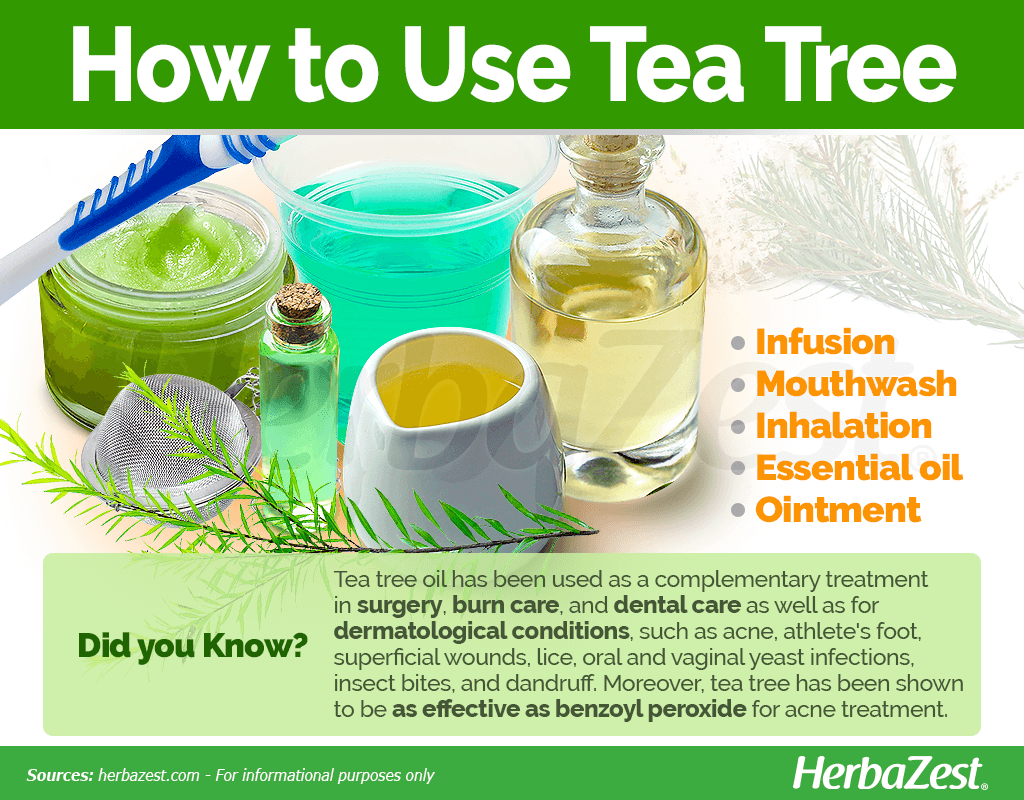
Growing
- Life cycle Perennial
- Harvested parts Leaves
- Light requirements Full sun
- Growing habitat Warm climates
- Planting time Spring
- Growing time 3 years
The tea tree is perfectly adapted to the extreme Australian wheater. However, if climate conditions are in favor, it can be cultivated in different latitudes.
Growing Guidelines
Australian cultivators generally establish tea trees from seedlings inside greenhouses and eventually plant them outside in dense plantations.
The tea tree is tolerant to floods and fire, but it cannot survive freezing temperatures. Moderate watering is recommended.
Tea trees mature after a year or two, usually flowering in October or November. The combination of its white flowers and spiky leaves can produce a somewhat "fluffy" effect.
Depending on how fast they grow and the local climate, harvest begins one to three years after planting. At that point, the entire tree is cut close to the ground, whose stubs will later sprout new growth. Leaves and small branches are distilled to extract the coveted tea tree oil.
Additional Information
- Other uses Cosmetics
Plant Biology
The tea tree is a perennial species with a unique whitish-brown bark, which shows layers that peel easily. It blooms creamy white flowers, and its woody seed capsules can carry up to 300 tiny brown seeds and lance-shaped, grayish-green leaves that smell of camphor when crushed. In the wild, these evergreens can grow up to 16 - 26 feet (5 - 8 m) tall.
Classification
Tea tree's scientific name is Melaleuca alternifolia, part of the Myrtaceae family, which boasts approximately 230 species. The fact that it doesn't grow naturally outside of Australia makes it unique from other Melaleuca species. Other well-known members of the Myrtaceae family are myrtle (Myrtus communis), allspice (Pimenta dioica), camu camu (Myrciaria dubia), guava (Psidium guajava), and cloves (Syzygium aromaticum).
Related Species
Although M. alternifolia was originally classified as a variety of the narrow-leaved paperbark tree (as M. linariifolia var. alternifolia), it is now universally regarded as its own species. Tea tree is not currently considered to have any subspecies or varieties of its own, most likely because its narrow natural habitat has kept it from branching out. Tea tree is related to a few other species with similarly important oils, such as cajuput (M. leucadendron), the broad-leaved paperbark tree (M. viridiflora), and M. linariifolia, which produces an oil similar to tea tree.
Historical Information
During the 18th century, Captain Cook and his sailors, traveling to the southeast coast of Australia, discovered that the fragrant, resinous leaves of the tea tree plant made a satisfying brew in warm water, which smelled like nutmeg and made a great substitute for true tea. About 150 years later, in the 1920s, A.R. Penfold, an Australian chemist, would research and promote tea tree's antiseptic properties. As a result, it became the go-to remedy for preventing and treating wound infections on the island.
After World War II, production of tea tree oil fell somewhat to the wayside in order to make way for antibiotics, but regained popularity in the 1970s. It was during this time that production became mechanized and consistent. As one of the world's most important natural antiseptics, tea tree is now widely available, primarily cultivated in New South Wales, Australia.
Economic Data
The industrial production of tea tree oil in Australia started in 1926, on a small scale, but during the 1980s and 90s, the country became the largest tea tree essential oil export earner. From the mid-1990s to 2000, there was a boom of tea tree oil demand, and the production increased to 330 - 440 tons (300 - 400 tonnes). After that period, prices went down, and the demand decreased. Nevertheless, due to the high quality of the Australian tea tree oil, this country remains the largest supplier of it.
Other uses
Antiseptic products. Tea tree extract can also be found in mouthwashes and gargles.
Personal care products. Tea tree is an ingredient in many body care products, such as soap, shampoo, lip balm, and topical creams.
Crafts. Due to the elasticity and softness of its bark, the tea tree was used by native Australian inhabitants to create sleeping mats and cradles.
Sources
- Arizona State University, Campus Arboretum, Melaleuca alternifolia
- Clinical Microbiology Reviews, Melaleuca alternifolia (Tea Tree) Oil: a Review of Antimicrobial and Other Medicinal Properties, 2006
- International Federation of Essential Oils and Aroma Trades, IFEAT 2003, THE AUSTRALIAN TEA TREE OIL INDUSTRY
- Encyclopedia of Herbal Medicine, p. 114
- New York University - Langone Medical Center, Tea tree
- Mayo Clinic, Drugs and Supplements, Tea tree oil (Melaleuca alternifolia)
Footnotes:
- The Medical Journal of Australia. (1990). A comparative study of tea-tree oil versus benzoylperoxide in the treatment of acne. Retrieved September 5, 2022 from: https://onlinelibrary.wiley.com/doi/abs/10.5694/j.1326-5377.1990.tb126150.x
- Current Microbiology. (2018). The Antibacterial Mechanism of Terpinen-4-ol Against Streptococcus agalactiae. Retrieved September 5, 2022 from: https://link.springer.com/article/10.1007/s00284-018-1512-2
- Letters in Applied Microbiology. (2008). Comparison of the cidal activity of tea tree oil and terpinen-4-ol against clinical bacterial skin isolates and human fibroblast cells. Retrieved September 5, 2022 from: https://sfamjournals.onlinelibrary.wiley.com/doi/full/10.1111/j.1472-765X.2008.02334.x
- Letters in Applied Microbiology. (2007). In vitro antifungal activity of the tea tree (Melaleuca alternifolia) essential oil and its major components against plant pathogens. Retrieved September 5, 2022 from: https://sfamjournals.onlinelibrary.wiley.com/doi/full/10.1111/j.1472-765X.2007.02128.x
